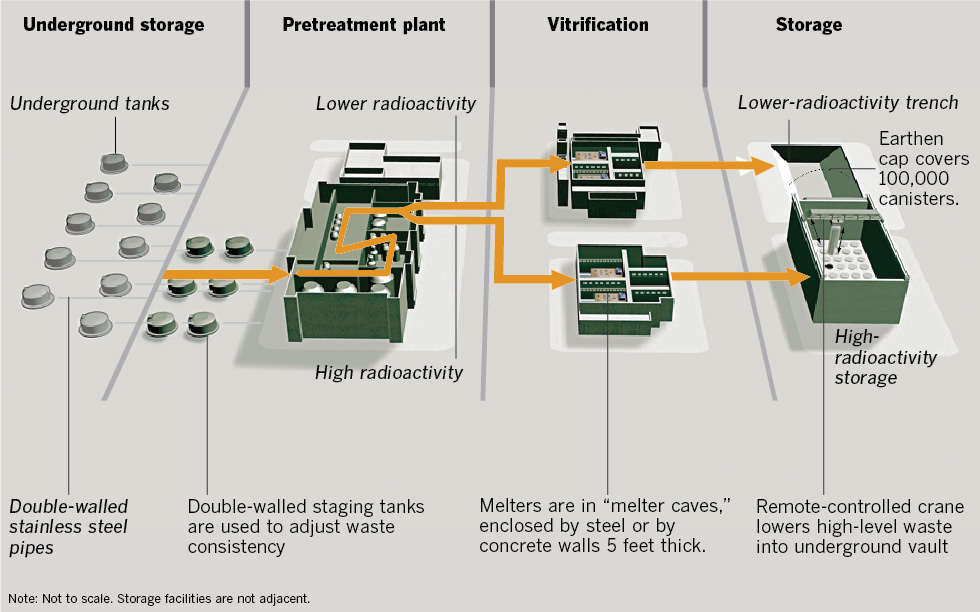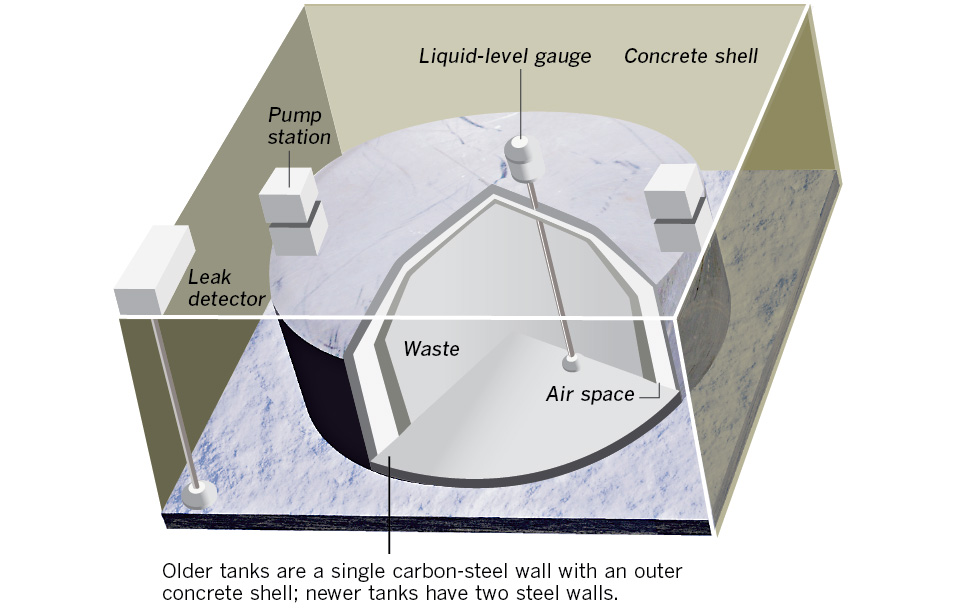INTERACTIVE GRAPHIC
Converting waste to glass
The federal government plans to stabilize 56 million gallons of radioactive waste stored in aging tanks at the former Hanford nuclear weapons complex in Washington state using a process called vitrification. Turning the waste into glass makes it safer and easier to dispose. Here’s how the conversion process works:
Overview: Hanford nuclear facility | Underground storage | Pre-treatment | Vitrification | Disposal and storage
An overall schematic of the Hanford nuclear facility showing the underground storage, pretreatment, vitrification and disposal/storage process. Click on the buttons above for a step-by-step look.
The 177 tanks range in capacity from hundreds of thousands of gallons to 1.1 million gallons. One hundred and forty-nine of them were built between 1943 and 1964; the other 28 were built between 1968 and 1986.
The first step in the process is separation. Radioactive material is separated into two streams, of higher and lower radioactivity, using filters and two chemical processes. A series of filters separates solids containing 95% of the radioactivity and lower-activity liquid making up 95% of the volume.
Silica and chemicals are added and �then piped to melters. Wastes are electrically heated to 2,100 degrees for up to four days. The resulting molten mixture is poured into canisters, allowed to cool and harden. The canisters are sealed and decontaminated.
Wastes get different treatments. High-radioactivity waste is stored in underground storage vaults until a national repository is ready. Lower-radioactivity waste is buried at Hanford in a high-density polyethylene-lined trench.









